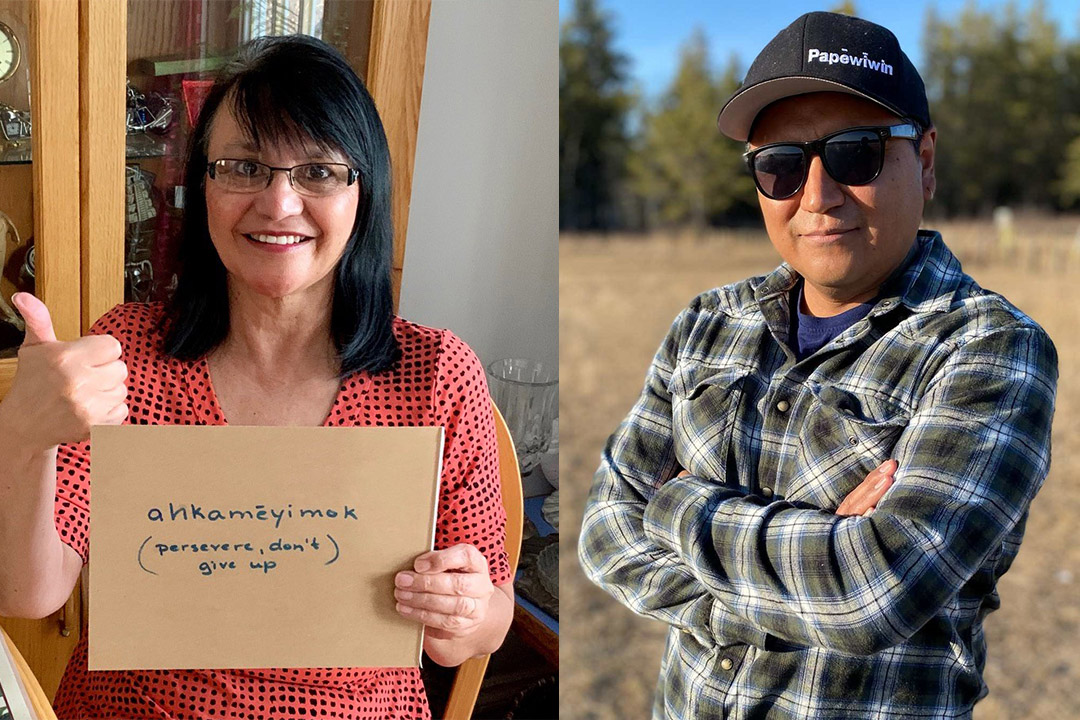
USask College of Medicine hosts Indigenous language training
Cree is one of the most widely spoken Indigenous languages in the province. A new course offered by the College of Medicine at the University of Saskatchewan (USask) now gives participants the opportunity to learn the language.
By AMANDA WORONIUK“I’ve wanted to do this for a little while. I was thinking about the TRC Calls to Action and there is one that specifically talks about language revitalization,” said Val Arnault-Pelletier, co-creator of the course, and co-ordinator of the college’s Indigenous Admissions Program. “I started thinking about the work we’re doing in medicine, and I thought maybe this would be a good opportunity to offer a Cree language class and see how it goes.”
“From my perspective, I think for people to speak the language is important. And to speak the Plains Cree language in this area of the province and other languages would be important as well, in terms of patient interaction, interaction with community people, the work that we do as the college,” she added.
Arnault-Pelletier turned to her colleague, Randy Morin, a Cree language expert and professor in the Department of Indigenous Studies (College of Arts and Science), to put together the classes. Morin holds a master’s degree in Indigenous Language Revitalization and led the instruction, using a combination of the direct method (speaking only in Cree) and textbooks, including Cree Medical Terminology.
“We learned a variety of topics related to their field such as health and wellness, greeting, kinship, questions and answers, and many others,” explained Morin. “Students were very comfortable as we sat in a circle each class and took turns speaking to one another. I assured students we were learning survival Cree and that space was the place to practice and make mistakes.”
Each class followed a similar format: a meal, prayers from an Elder and language instruction. Held over the noon hour, the course accommodated work and learner schedules, and employed technology which allowed student participation from Regina. Due to the COVID-19 pandemic, the last class was held remotely using Zoom.
For medical students, the course provided a practical way to gain language skills and communicate with patients.
“The Cree language class offered through the College of Medicine was a wonderful opportunity to supplement my medical education. Learning words for everyday life as well as words related to health, wellbeing, and sickness will be useful to create relationships with patients,” explained first-year medical student Mackenzie Jardine.
“As a Métis woman with little exposure to Indigenous languages, I really enjoyed taking the class and finding new connections with my Indigenous ancestry,” she added.
Arnault-Pelletier said the ability to speak to a patient in their own language can’t be underestimated, citing an example of an experience her father had.
“My father was living in the north, and one of the non-Indigenous nurses knew enough Cree to be able to say ‘Hello, how are you?’ to him,” said Arnault-Pelletier. “For him, that was so meaningful she would take the time to learn—in our language—that basic greeting. And he mentioned it to me on more than one occasion.”
Led by the Office of Indigenous Affairs in the college, the 10-week course introduces basic language knowledge and is open to staff, students and faculty. The course included more than a dozen participants, and honours traditional Indigenous languages and culture in an accessible way.
Based on the positive response, Arnault-Pelletier indicated plans are in the works to offer another Indigenous class in the near future. Her team is looking at the options to offer Cree again or branch out into a different Indigenous language.
“This is our pilot, so we do plan to offer it again. And I really do see this as part of curriculum. Part of what we need to do as a college, in terms of including cultural competency and inclusion of who Indigenous people are, in our curriculum.”
